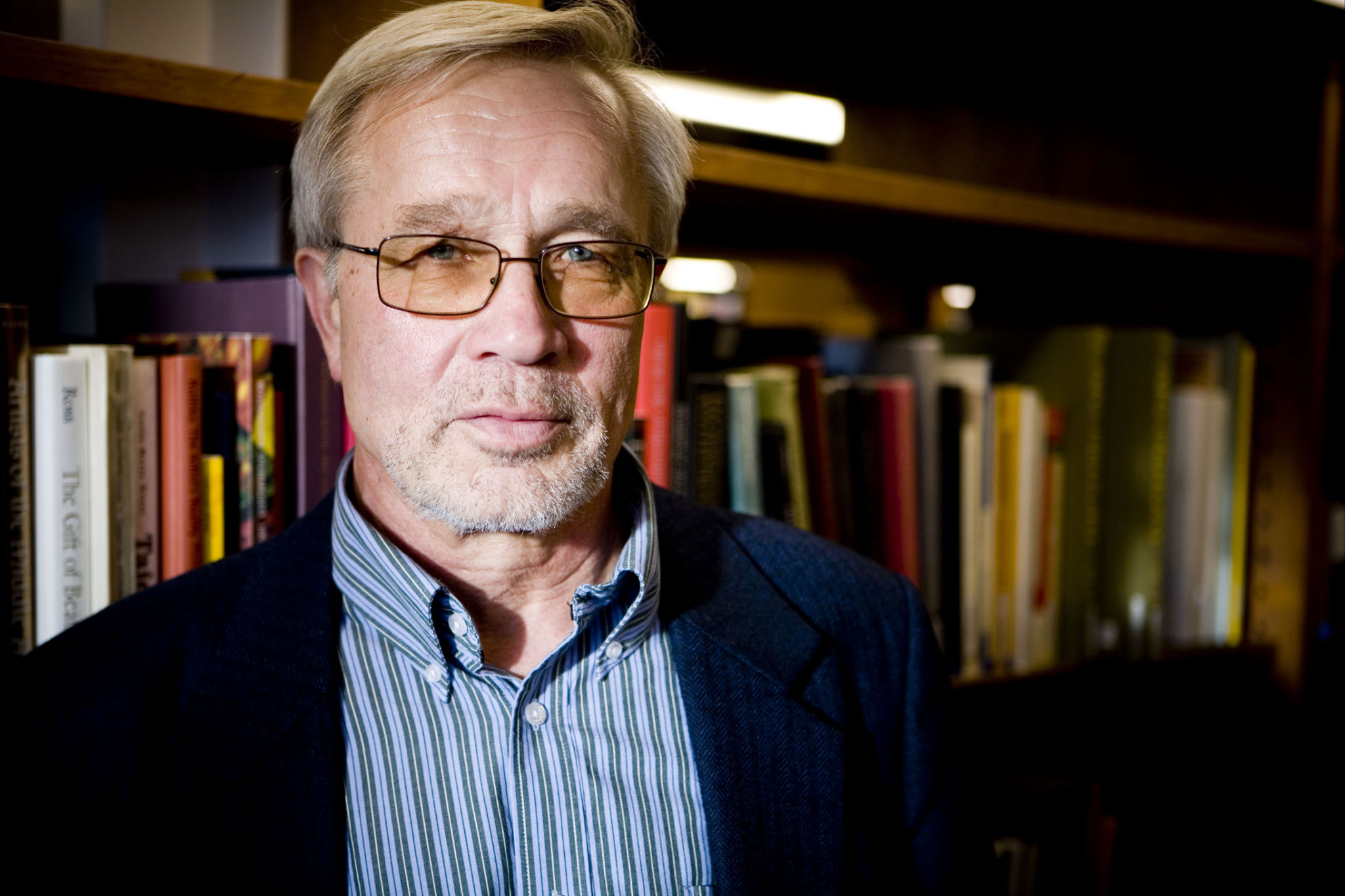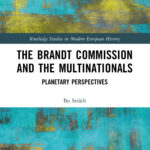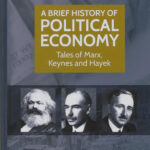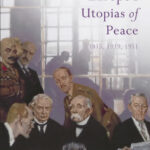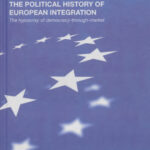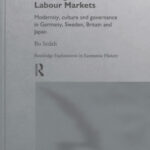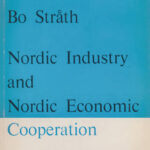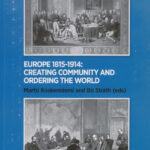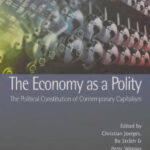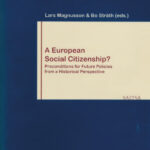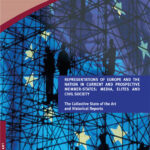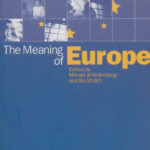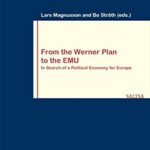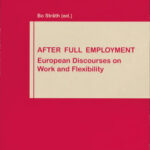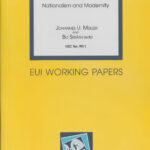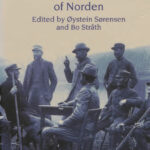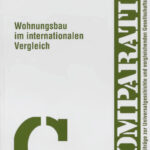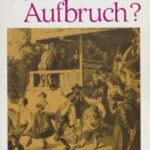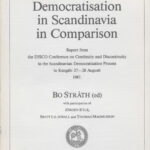The starting point: a brief Western saga that culminated in the 1960s
It would be wrong to discuss developments in the US since 2016 as an exclusively American problem. The events in the US since 2016, which have accelerated since 2025, are taking place against the backdrop of a more general global zeitgeist of eroding democracy, new-old imperialism around ideas of geopolitics and geoeconomics, and value nihilism, where convictions about stable values are dissolved by strong emotions in digital social networks. Democracies are mutating into authoritarian and paternalistic forms of government. The label “illiberal” challenges liberal notions of democracy. These trends are interrelated and reinforce each other. It is this general downward slope, from which the American landslide occurred in November 2024/January 2025, that Jürgen Habermas (2025; cf Stråth 2025) warns could also occur in Europe if its leaders do not actively take countermeasures.
Democracy in the modern sense, universal suffrage for men and women, and a parliamentary system with substantial influence over the content of politics, made its breakthrough in the 1920s after the mass mobilization for the First World War. Democracy as an ideal and the struggle for democracy are older. The breakthrough applied to a limited part of the world, the industrialized countries. The mass mobilization for World War II deepened the political substance of parliamentary work with ideas of universal state-organized welfare, but in a world limited to what was called the West: the United States, Western Europe, and Japan (after 1945). The expansion of the welfare states in Western Europe in the 1960s can be seen as a democratic golden age. The center of politics was the parliaments. It is the period that Irish political scientist Peter Mair (2013) in a posthumously published book sees as the culmination of democracy, when the decline also began. Until then, politics had been interest-based and ideologically driven by the conflicting interests that developed in industrial society. These interests and their ideologies developed social identities that clashed with each other in national parliaments. The work of compromise gave rise to national identities that both bridged and perpetuated conflicts of interest.
If the First World War led to the breakthrough of democracy, the Second World War brought about its perfection in a small part of the world as Western mixed-economy welfare states with mass consumption and mass production in a mutually reinforcing dynamic. Keynes’ economic theory legitimized the system. The theory emphasized political demand stimulation. Growth provided an ever-expanding pie that facilitated distribution policy using progressive taxation as an instrument. Welfare was also an ideological instrument in the Cold War, a showcase against state socialism in Eastern Europe. There was a strong belief that what had come to be seen as social engineering had found a permanent order. But no one believed that history had come to an end. The Cold War threatened to destroy everything.
The interest-breaking and compromise-seeking democracy that Mair saw culminating in the 1960s was based on a social discipline created under the pressure of the world war, a social discipline for national cohesion. It continued during the nuclear terror of the Cold War. The pressure eased after the successive Congo, Berlin, and Cuban crises of 1960-1962. After Cuba, the abyss no longer felt so acutely close. Social discipline became looser, with “1968” as a visible sign. Conflicts over distribution also increased (Stråth and Trüper 2025). “1968” was a generational revolt with protests against mass consumption, excess, and environmental destruction. The protesters demanded global justice and more support for developing countries. The protest spread throughout the Western world with different emphases. In Germany, it was about coming to terms with how the older generation had allowed and supported Nazism; in France, the target was the mandarins at the universities and de Gaulle’s authoritarian style; in the US, it was the Vietnam War. The Western protests inspired the Prague Spring in Czechoslovakia, which led the Soviet Union to intervene with military force. The labor movement in the West radicalized the issue of distribution and questioned the spirit of consensus that had prevailed around not allowing conflicts of interest to escalate beyond control. Voices were raised in favor of co-determination and corporate democracy with a new view of ownership. In summary, pressure on democracy increased from within as it eased from outside during the Cold War.
A few years before “1968,” the transition began that Peter Mair identified as a shift from ideology- and interest-driven compromise on the issue of distribution to a professionalization and technocratization of politics, which also meant a de-ideologization. New theories in the social sciences about the welfare state and social community legitimized this development. Political parties began to seek to maximize their votes outside their interest groups, thereby watering down both the definition of interests and their ideological driving force. The basis for parliamentary compromises became more difficult to understand. Politics became technocratic administration and government by cartel, which eliminated real opposition as meaningful differences between the parties dissolved. Radicalization can be seen as a protest against de-ideologization and technocratization at a time when external circumstances, the Cold War, made ideological struggle possible.
When the United States announced on a Sunday in August 1971 that it could no longer keep its Bretton Woods commitment to peg the dollar to a fixed gold price, the conditions for protest changed fundamentally. The fall of the dollar led to rapidly rising inflation, which caused the world’s oil producers, most of them in the poor South, to raise their prices dramatically. Oil shipments declined and their future became uncertain. The construction of supertankers collapsed. The shipbuilding industry, as well as its many suppliers in steel and other industries, fell into a structural crisis with mass unemployment. It was a crisis in what was known as the Fordist production regime of assembly lines and piecework. The oil price hike shocked and took the political leaders of the West by surprise, who found themselves in a systemic crisis. The radical wave of the late 1960s came to an end.
The Third World took over where “1968” and the radicalization of the working class left off. Its leaders saw oil as an example for other raw materials. United as the G77, they demanded a New International Economic Order (NIEO) with higher raw material prices and opportunities to nationalize Western companies in developing countries (in exchange for compensation). For a few years (1973-75), they made the UN the main arena for negotiating their demands with the industrialized countries. A North-South conflict was added to the West-East conflict of the Cold War. The alarmed Western leaders founded the G7 to ward off the threat from the G77 (Stråth 2023: 109-115).
This was the situation that led employers and capital owners to definitively abandon the self-discipline that the Cold War had imposed on them. At that point, they followed the radical workers who had demanded greater influence over companies, but of course with different objectives. NIEO, with its demands for opportunities to nationalize companies, was, in addition to the radicalization of workers in Western Europe, a further incentive to abandon the policy of tripartite bargaining (governments, employers, trade unions) to solve the interest conflict.
The crisis in the Fordist production regime gave rise to new ways of thinking about productivity and profit. The future lay in the production of financial services. Strong demands were made for their internationalization away from the control of national governments. The neoliberal break began. In the West, Margaret Thatcher and Ronald Reagan, supported by the economic-political theories of Friedrich Hayek and Milton Friedman, led the break with the post-war Western order established at Bretton Woods in 1944, which had formed the basis for several decades of functioning welfare democracy, which had worked so well that many believed it was guaranteed for the future.
In the US, Samuel Huntington also found a turning point in the 1960s, but a different one, when in the mid-1970s he reflected on the collapse of the dollar in 1971-73 and the global crisis that followed (Crozier, Huntington, and Watanuki 1975). The masses were demanding too much, he argued. Democracy was driving demands that exceeded the financial capabilities of the state. Huntington proposed a balance between democratic vitality and government capacity by tightening democratic opportunities. One could also say that he wanted to restore social discipline. Huntington provided arguments for the emerging neoliberal narrative, in which fiscal restraint became an instrument for achieving budget balance and tax cuts as economic stimulus, rather than government spending as recommended by the Keynesian manual. According to Huntington, democracy should be designed to focus more on its form than its substance. This argument was easily reconciled with the neoliberal orientation of politics and economics in the 1970s. The problem from a democratic point of view was who should be required to exercise self-discipline and who should be exempt from it. However, Huntington did not actually phrase it that way.
The neoliberal breakthrough
The neoliberal breakthrough in the 1980s, which was reinforced to what can almost be considered hegemony in the 1990s, was closely linked to the transition from industrial goods production to financial services as an engine of growth, particularly through the deregulation and internationalization of capital and credit markets and currency trading. Investing in money became the motto that led to growing income and wealth gaps, moving away from what had characterized the post-war Keynesian welfare states. Speculative currency trading put pressure on the governments of nation states that had combined their demand-stimulating Keynesian policies with strict control of credit markets and currency trading. As this new freedom was later combined with digital technology to read trends and make speculative decisions to sell or buy with transactions in nanoseconds, the pressure on governments increased even more.
Swedish Prime Minister Ingvar Carlsson and Finance Minister Kjell-Olof Feldt are good examples of a more general situation that particularly affected Europe’s social democratic parties and triggered tensions between heads of government and finance ministers even in the pre-digital era. Rolf Gustavsson has described how, after the 1988 election victory, the tone of conversation between them hardened in terms of their views on the economy and the possibilities of demand-side policy. The Prime Minister had an outburst of anger:
What is going on in this country? The government has fought its way through a budget process in which we have worked hard to push expenditure increases down to zero in order to keep the Swedish economy in balance. At the same time, the banks are pouring money into their customers to increase consumption. You can’t open a newspaper without seeing huge advertisements for low-interest loans. No wonder the economy is overheating (Gustavsson 2010:51).
In hindsight, Carlsson has described the deregulation of the credit market as his biggest mistake during his seven years as prime minister. In hindsight, Feldt has admitted that he underestimated the consequences of deregulation, but at the same time claimed that there was no choice (Gustavsson 2010: 50-55).
The liberation of capital owners from national barriers forced governments to exercise restraint in public spending. Large deficits led to rising interest rates on the loans that financed the deficits, which in turn led to reduced scope for new visions for the future and creative policies. Politics became increasingly focused on the administrative management of resources within given frameworks.
What is interesting about the views of the two Social Democrats is the finance minister’s position that he had no choice and the prime minister’s opinion that he regretted his decision, which means that he considered that he did have a choice. One must agree with Carlsson that there was, of course, a choice. But the question is at what cost for a small country to stand outside an international trend that was said to be the only right way forward. Fiscal policy against the international capital markets was no easy task. The emerging hegemony of the neoliberal interpretative framework made it difficult to resist the pressure for deregulation and internationalization. In France, François Mitterrand made an attempt to continue with Keynesian policies in 1981-83, but the reaction of the financial markets forced him to abandon the attempt. Once deregulation had taken place, governments remained vulnerable to the opinions of market operators, which limited their scope for action. Whatever they did, financial operators (“the market”) put them in a straitjacket.
More than anyone else, Margaret Thatcher is associated with TINA, there is no alternative (to the market). After 1990, the phrase increasingly became a guiding slogan. Its use did not involve any deeper reflection on who the market was. The market became a fetish, an abstraction that became concrete in the political inability to act. The forces behind the mystification of the market did not hesitate to strike if they felt that governments were acting wrongly. In doing so, they acted like a school of fish. The change in control over exchange rates and interest rates had significant political repercussions. Margaret Thatcher reinforced the impression of an increasingly helpless democracy with the argument that it had no alternative to the demands of the market. The trend toward professionalization and technocratization of politics in Western democracies that Peter Mair observed in the 1960s accelerated, not because politics was about vote-maximizing administration of welfare, but because there were no alternatives to the dictates of the “market.” Political conflict and competition between alternatives with different visions of the future disappeared when everyone gathered in a political middle ground in a kind of party cartel. Initially, the gathering was about maximizing votes, which after 1990, under neoliberalism, was combined with market adaptation. The term “post-politics” has been coined to describe this development. When protests against the arrangement grew and the established parties were unable to address the discontent, as there were no alternatives to the established technocratic “muddling through,” political entrepreneurs emerged with the ability to address the frustration (Pepijn 2019). These were the autocratic paternalists described by Stephen Hanson and Jeffrey Kopstein (2024) in the first article in A World Order in Dissolution (Stråth 2025), with Donald Trump as the crowning glory.
Colin Crouch (2009) has described how governments’ Keynesian demand-focused budget policies increasingly gave way to private banks stimulating demand through credit, which went hand in hand with the privatization of a range of state and municipal services in areas such as education and healthcare. Crouch has theorized about the experiences of Ingvar Carlsson and many other political leaders. Crouch talks about privatized Keynesianism. The growing passivity of states led to a privatization of demand stimulation from state budgets to new forms of credit, especially credit cards.
In a watered-down and de-ideologized, or hegemonic highly ideologized, if you will, political center, there was general consensus that parliaments were subject to market demands. The neoliberal globalization narrative, which was hegemonic after 1990 until the collapse in 2008, legitimized the order without much debate. As mentioned, there was no alternative. Beneath the discursive surface, labor markets underwent fundamental changes, not least in terms of interest representation, especially trade union representation, with large groups of volatile low-wage workers falling outside the welfare system. The financial markets also underwent fundamental changes through their almost complete internationalization, which had a knock-on effect on the budgetary restrictions of national governments. The flip side of the globalization narrative, the reduced freedom of action of national governments and the emergence of a transnational precariat, disappeared under the hegemony of the narrative.
Low-intensity democracy
Susan Marks (2000) was an early contributor to a broader body of literature showing how neoliberal democracy became low-intensity: formal, with universal suffrage but without much influence over the substance of politics. It was this form that spread across the world with the globalization narrative, where democracy under the market was the form of government that became increasingly common. Neoliberal economics went hand in hand with neoliberal democracy, a new form of democracy compared to the one that built the welfare states. The lively social criticism of the 1960s disappeared and the nature of public debate changed. The norm and nomenclature for defining democracy came to be based on formal criteria such as suffrage, free and secret general elections, freedom of expression, etc., but nothing was said about how voters could influence the political substance of issues such as social justice and welfare. Increasing social divisions in the wake of globalization were left out. Marks shows how free and fair elections left the deeper concentrations of power and social injustices untouched. She further argues that the ideology surrounding low-intensity democracy essentialises the concept of low-intensity democracy by polarising it against undemocracy rather than against the previous, more substance-oriented form. She speaks of teleological escapism when she argues that political rights worthy of the name, and not just the form, must come before economic and social rights, and that political rights are about being able to shape the future and change what is perceived to be wrong. By political rights, she means the ability to influence the content of politics, not just to cheer in acclamation.
Andrew Lang (2011), who, like Marks, writes from an international law perspective, supports the argument about the development of a formal low-intensity democracy as the political core of the neoliberal breakthrough, the depoliticization of politics. The 1990s saw a sharp expansion of democracy in the world in the wake of the collapse of the Soviet empire. This expansion was about much more than Eastern Europe. Civil societies with democratic movements and the overthrow of autocratic rulers emerged almost everywhere in Latin America, Africa, Asia, and the Middle East. The media rejoiced at the fall of authoritarian regimes and the breakthrough of democracy, which went hand in hand with the triumph of the neoliberal globalization narrative.
In the critical academic commentary that emerged after 2000, the term low-intensity expressed the same thing as the term alternative-free. Low-intensity was the critical concept from the academic review from the outside of the political process, while alternative-free was the disciplining concept from the inside by political leaders. The meaning of both was that democracy in its neoliberal form was more about form than substance and was fundamentally an expression of depoliticization. The democracy that was watered down in the West under the concept of alternative-free had only existed for a few decades after World War II, but was based on a century and a half of struggle since the 1830s as a counter-movement to the downside of industrialization and the mobilization of populations for two world wars. The idea in the 1990s that democracy, as established in the West after 1945, would spread throughout the world while being emptied of meaning in the West was, of course, an illusion that was successfully concealed under the powerful narrative of globalization. No one wanted to see that there was a difference between democracy and democracy.
Samuel Moyn (2010, 2018) has shown how human rights followed democracy in the erosion of substance and the concentration on form. An important human right became the protection of property, while social rights were insubstantial. Multinational companies became subjects covered by human rights. One senses the demands of developing countries for opportunities to nationalize companies behind this position. Moyn talks about human rights in the neoliberal maelstrom (Moyn 2018: 173; cf. Stråth 2023: 161). In international law, there was a shift from states to individuals as legal subjects, whereby companies as legal entities were also equated with individuals as natural persons.
Low-intensity democracy avoided addressing the conflict of interests in the labor market, and issues of corporate democracy and redistribution disappeared from the debate. Large parts of increasingly segmented labor markets were excluded from interest representation. Class conflict disappeared from democratic theory. Ideas about a classless consensus society accompanied increasing signs of social marginalization and societal disintegration. Dani Rodrik (2000) talks about the trilemma of globalization, where the nation state, democracy, and the borderless market form a triangle, but only two of them can coexist. Rodrik describes theoretical rather than empirical contexts: Democracy and the nation state cannot function with a borderless market. Democracy and a borderless market cannot function with nation states as the locus of democracy. Nation states cannot be democratic if the market is borderless.
Autocratic paternalism
The neoliberal collapse in an American speculative bubble in 2008, inflated by the world’s borderless and naive belief in the dollar, resulted in shock following massive financial packages from governments to rescue the speculative banks, too big to fail. Politics remained without alternatives in the Thatcherite sense that it was dictated by the market. Opinions were formed that focused on the losers of globalization. Hegemony had been about the winners as the path to success for all. Greek economist Yanis Varoufakis (2011: 135), who was also finance minister for a time, has formulated the difference between the winners and the losers: “The rich… had discovered an ingenious way of getting richer—by trading on paper assets packaging the dreams, aspirations, and eventual desperation of the poorest in society.” The losers articulated popular anger and contempt for politicians toward the established parties and their representatives. When political entrepreneurs successfully began to channel this discontent, they focused on the nation as the loser of globalization that needed to be recreated. A populist nationalist protest arose, directed against the political establishment that had managed globalization, the “cosmopolitans” and “globalists.” Using concepts such as illiberal democracy, leaders with authoritarian ideals took up the fight against neoliberal democracy. Paternalism spread as a style of government, as Hanson & Kopstein (2024) and others in a rich body of research literature have noted (see, for example, Levitsky & Ziblatt 2018 and Lewis 2018). This was followed by more radical arguments about a deep state where experts stifled initiative and other conspiracy theories, as documented by Hansson & Kopstein (2024) in a chapter entitled “The Deep State Bogeyman.” It is this development that forms the backdrop to Trump’s USA as described in the first part of A World Order in Dissolution (Stråth 2025).
The reactions to the financial collapse and the massive bailout with taxpayer money pulled politics to the right in the form of populism and authoritarian paternalism that challenged the parliamentary administration of a policy that was said to have no alternative. Since 1990, everyone had rallied around the principle of an imagined middle ground defined by the market and what were said to be its demands. Until the triumph of politics without alternatives, the parliamentary conflict line ran between the right and the left, both of which were defined by ideology and interests. The conflict and compromise between them held the middle ground together. The point is that the compromises were based on ideological and interest-defined divisions, which strengthened the middle ground but were now stifled by what was said to be an alternative-free market. The negotiating room that strengthened democracy disappeared. After 2008, the line of conflict reappeared, but now not in the middle but to the right of the center ground, a line that for a long time was about whether it should be a boundary, a firewall, or a line of negotiation. The shift is towards the line of negotiation between the moderate right and the populist right. It is around this line that Marie Le Pen and Emanuel Macron play cat and mouse over who is the center and who is the right, dividing the nation. Both of their attempts to unite it make it highly polarized. In the principle of vote maximization that applies, the self-proclaimed center verbally adopts populist right-wing rhetoric and shifts the political substance to the right, but claims that it is better because it comes from the center or from the left. Overall, there is a shift of norms and language as well as political substance to the right. The immigration issue is the catalyst.
France is just one of several examples. The pattern can be seen in the EU, where the leader of the conservative parties in the European Parliament, EPP, Manfred Weber, is seeking a middle ground between the right-wing populists and the left, where the former centrist parties are also being pushed aside by Weber’s right wing, which claims to be the center. When the moderate, liberal-conservative right tries to define itself as the center, it automatically follows a line of negotiation to the right, to the far right. In this perspective, Italy’s right-wing populist head of government, Georgia Meloni, plays a key role not only in Italy but also in the EU. She is also cherished by the Trump administration, which wants nothing more than to make confrontational right-wing populism in Europe mainstream.[1]
The erosion of democracy after 2008 from its low-intensity status towards illiberal, authoritarian and paternalistic regimes was long described as a creeping death, even during Trump 1 (Levitsky & Ziblatt 2018). After six months of Trump 2, one must speak of a decline in the US that resembles a landslide. No one talks about a creeping death anymore. It is this situation that Europe must finally—self-critically but with confidence—address without mumbling under its breath. And ask itself how close it is to an American development.
The nihilistic problem: the boundless, the immoderate, the senseless, the worthless
After the departure from the Fordist production regime, which was based on industrial manufacturing with time studies, piecework and assembly lines as methods, and investments in fixed facilities (bricks and mortar) that lasted for decades and used oil as fuel, a monetary mindset emerged. The lucrative value creation of the future lay not in industrial goods production but in trading financial services. The added value lay in the money itself, which was both the new input and the finished product. With this view, resistance grew to national governments’ control of trade in currencies and other financial services. Demands for free trade across national borders for financial services grew. During the 1990s, financial markets were freed from their national ties, but this liberation had already begun in the 1980s.
The monetization of the economy grew exponentially as the engine of economic growth shifted from fixed assets to money portfolios. The profit lay in investing in money and trading with money. The yardstick that determined pricing in commodity trading, money, itself became the subject of pricing and thus acquired a volatile value. The monetisation of the neoliberal era increasingly transformed values into prices, making them relative, negotiable and subject to speculation. The cornerstone of the old order, the price of gold, disappeared in a sea of floating values. In the borderless market, even the values that underpinned democracy became negotiable. Not only material values but also intangible values and ethical principles are drawn into the nihilistic trend where everything has a negotiable price. Absolute, priceless values become valuable and negotiable. Human rights were not as absolute as they were said to be. This was not only true of the United States. European governments and the EU pay bribes to unscrupulous authoritarian rulers south of the Mediterranean so that their representatives will stand for the nihilisation of Europe’s canon of values. The right to asylum comes at a price and is no longer absolute. Values become boundless, excessive, senseless, and worthless (Stråth and Trüper 2025).
Donald Trump is the perfect visible illustration of this development, the techno-oligarchs’ man for creating new values. Nothing represents this value creation around the boundless, the immoderate, and the senseless, which ends in the worthless, better than Trump’s AI image of himself as the pope. In his unparalleled narcissism, he possibly believes in the image as a possible reality, just as he believes in himself as a Nobel Peace Prize winner, which in itself is a form of nihilism where one believes that everything can be bought. The digitization of trade in values has accelerated this development. Social media develops a mutually reinforcing dynamic between the constant creation of new values and the consumption of values (Stråth and Trüper 2025).
An important aspect of nihilism is that rules and cultural codes for the public sphere and the representation of political power are dissolving. The public becomes private and the private becomes public. In an article, historian Christopher Clark recounts a televised press conference at the White House in February 2025, where First Buddy Elon Musk was to report on the newly established DOGE, Department of Government Efficiency. Clark felt horror when he saw and heard Musk talking incoherently and without evidence about how he and his team had discovered large-scale fraud and bottomless corruption. President Trump sat at his desk in the Oval Office in a dark suit. Musk stood in jeans and an overcoat with a MAGA cap on his head, which he only took off to wipe sweat from his forehead. His movements were clumsy and he spoke without making eye contact with the journalists crouching in front of him. He may have been under the influence of ketamine. He had brought his four-year-old son, named X Æ A ‒Xii, with him. While his father was speaking, the son picked his nose and, to the president’s apparent dismay, smeared it on the corner of the venerable Resolute Desk (Clark 2025). None of the actors seemed able to comprehend the public nature of the press conference. It was as public as such an event can be in the room that, for most Americans, represents the authority of the presidency more than anything else. The radical informality exuded by the two dudes and the child, as if they were meeting privately at home, was obscene, writes Clark.
The example may be extreme, but it represents a trend: the breakdown of public order. Another example is the NATO meeting in The Hague in June 2025, where the bowing and scraping before Daddy Donald, as the secretary general called him, was an expression of what must be described as a historic crisis of meaning. In a time of war with existential issues to discuss, 32 heads of state and government gathered for a meeting whose main goal was to keep Trump in a good mood. With that goal in mind, it had to be kept short, just a couple of hours, so that Trump’s attention span would not wane. Everyone congratulated themselves when the goal was achieved thanks to the lack of substance to discuss. It was all a court ceremony of groveling subservience, with 31 world leaders dancing around the golden calf, leader number 1. The Secretary-General was visibly delighted in his role as chief court jester. The only issue on the table was five percent of GNP for defense, but it was not a matter for discussion but a dictate, a bizarre number mysticism plucked out of thin air by Trump, which was accepted before the meeting without any substantive discussion. Is this how Europe’s leaders want to ensure Europe’s security? If not, why are they doing it? A meeting where the mercurial Trump remained calm is proclaimed to be a confirmation of the seriousness of the US’s NATO commitment. Really? Why was there no adult in the room? Backbone? Self-confidence and self-respect? Leadership qualities? The event was a soap opera, where the public was not concerned with the discussion of serious issues but with court ceremonial codes and sign interpretations, where social media afterwards passionately discussed things like whether a smile was actually a sneer.
The belief in the boundless possibilities of the market, which was reinforced during the bonanza years of the 1990s, was linked to an equally strong belief in the possibilities of the present when, in connection with the liberalization of the financial markets, control over lending was privatized to issuers of credit cards and other financial sources that provided credit for immediate consumption. The long horizons of the future from the era of planning—when reconstruction after World War II took off and welfare states expanded—disappeared into a distant haze, and attention was drawn to a hectic present where it was important to consume while the party lasted. It was supposed to last a long time, but the present was still hectic as a result of the frenzy. The modern time regime surrounding the distinction between the past, the present, and the future, which held the value system together, dissolved and transitioned into a boundless presentism (Hartog 2003; Stråth 2024).
Neoliberal interpretive power and monetisation, the liberalisation of financial markets, combined with the digital power of social media, drove the development towards the boundless, the excessive, the senseless, and ended with the worthless in a present that had become permanent. A typical expression of the immoderate and the senseless was when German banker Josef Ackermann claimed that a 25 percent annual return was a future standard for capital investments and money trading. He carried his goal like a monstrance before him, tirelessly proclaiming that it was realistic. The goal was a dogma. The knowledge on the internet was limitless. The algorithms in the hands of financial operators created values of hitherto unimagined proportions and drove the game to the abyss, where everything was destroyed in the collapse of 2008. Democracy and nihilism do not go well together. Democracy is based on values.
The power of algorithms
Social media became an excellent amplifier of this presentism of excess, where communications became shorter, faster, and more single-minded. With the help of algorithms, the result was a corrupted language, where hostility and emotions changed public debate and political discourse in a devastating way with simplifications and abbreviations of complex issues. Harshness and emotions were certainly nothing new in public debate, but the pace and spread were new and made everything more compressed. Social media is where the roots of the infantilization and trivialization of politics lie, with every politician and other public figure with self-respect feeling chosen to express an opinion on everything from the big to the small in order to show that they are present. Language is impoverished when emotions and intellectual thoughts are expressed with emojis.
Giuliano da Empoli has explained in a short essay with a historical analogy not only what is at stake but also the lack of awareness of the tech oligarchs’ offensive. Over the past three decades, political leaders in Western democracies have behaved like the Aztecs when confronted with the conquistadors’ technological inventions, writes da Empoli. Faced with the thunder and lightning of the internet, social networks, and AI, they have submitted themselves in the hope that a little fairy dust will fall on them. Their docility is no solution for ensuring the survival of democracy. After pretending to respect the rules of democracy as long as they were in an inferior position, the tech oligarchic conquistadors gradually forced their empire on the unsuspecting Aztecs in modern form (da Empoli 2025: 12-13). In Europe, governments still exist as a supposed counterweight to the power of tech platforms, but with vague ambitions to regulate it. In the US, the situation seems to be one of fusion with government power. European democracy is their next target.
In his aphoristic style, da Empoli recounts impressions from meetings around the world as an advisor to leading Italian politicians and describes how difficult it was for politicians to understand and embrace the implications of the digital revolution.
But there were exceptions. Da Empoli recounts, among other things, Henry Kissinger at a conference in 2015, where Kissinger had intended to skip the session on artificial intelligence, about which he knew nothing. But, with German precision, he showed up anyway. And there he was struck by lightning: the founder of DeepMind was presenting software that would beat the world champion at Go. Kissinger immediately understood that there was much more at stake than the digitization of a board game. And contrary to what he had thought, it affected him directly, in his capacity as a “part-time historian and statesman.” For the first time, Kissinger noted, human knowledge is losing its personal character, individuals are being transformed into data, and data is becoming dominant. AI is not just a simple power accelerator like politics, but a new form of power that differs from all the machines that humans have invented so far. If automation was about the means, AI is about the ends. It sets its own goals and develops abilities that were thought to be reserved for humans. It makes strategic decisions about the future.
Where his younger colleagues and advocates of democracy or corporate optimists from Davos, the benevolent Davos man, still saw only a technical challenge, Kissinger understood that AI is a political challenge. Of the statesmen of Kissinger’s generation who had experienced war in their youth, none fell into the trap of seeing power as a competition between technocrats armed with PowerPoint presentations, da Empoli summarizes his impressions from the meetings (da Empoli2025: 126-127).
The dilemma that has characterized politics in the 20th century was the relationship between the state and the market: how much of our lives and the functions of society should be controlled by the state, and how much should be left to the market and civil society? From this starting point, da Empoli argues that the decisive dividing line in the 21st century will be that between humans and machines. To what extent should our lives be subject to powerful digital systems, and on what terms? Ultimately, individuals and societies must decide which aspects of life should be reserved for human intelligence and which aspects should be entrusted to AI or collaboration between humans and AI. And every time they choose to prioritize humans, where AI could have guaranteed more efficient results, there will be a price to pay (da Empoli 2025: 131). And vice versa, one might add.
So which individuals should determine the relationship between AI and human intelligence? At present, there is no doubt that it is the tech oligarchs who see this choice as their task. If we look at Vice President Vance as a representative of politics and consider his statement at the Munich Security Conference in February 2025 (Stråth 2025), there is no doubt that, in any case, leading representatives of American politics agree. Da Empoli contrasts Kissinger’s view of AI, based on a deep historical education, with Mark Zuckerberg’s ignorance. “It’s great to be back in Beijing,” writes the Facebook CEO on a photo of himself in jogging shorts on Tiananmen Square, where thousands of students were massacred by the military in June 1989 (da Empoli 2025: 126).
The conclusion is obvious. It is fundamentally important that parliaments and governments take control of and regulate AI, and do so decisively and with great clarity. European leaders must therefore take a stand against the policies represented by the US vice president. This is not just a matter of rules regarding AI, but also of internet interaction and the creation of European platforms, data storage clouds, navigation systems (the basis for which exists with Galileo), etc. It is also about the realization that time is of the essence. Finally, it is about the determination not to buy freedom from US tariffs on goods by renouncing the regulation of algorithms in the trade in services.
What now, Europe?
In the situation described here, it is time to tie in with Etienne Balibar’s argument for a social Europe as a response to the situation (Balibar 2025). The task is to look for the historical conditions for Balibar’s proposal.
During the 1970s, the European integration project was difficult to implement. Agricultural policy was misguided and the customs union was insufficient in the search for Europe’s place in the world order. The crisis in the wake of the dollar collapse cast a shadow over the project. French President Valéry Giscard d’Estaing and West German Chancellor Helmut Schmidt worked on a European currency to replace the dollar. Prior to that, Edward Heath, Prime Minister of the United Kingdom, an EEC member since 1973, and West German Chancellor Willy Brandt had outlined a currency union between an EEC currency and the pound, a more advanced plan than that of Giscard d’Estaing and Schmidt. In 1974, Heath was forced out of office by Margaret Thatcher, who had completely different ideas, and Willy Brandt resigned after an East German spy was discovered in his chancellery (Stråth 2023: 179-180). The European kairos moment in response to the fall of the dollar passed, but their successors, d’Estaing and Schmidt, continued to work in a more technocratic direction. They called the leaders of the US, the UK, Japan, and Italy to a meeting in Rambouillet outside Paris in November 1975. This was the basis for what became the G7 the following year when Canada joined. Giscard d’Estaing and Schmidt wanted above all to have the US’s blessing for more independent European monetary cooperation to replace the failing dollar. Kissinger was firmly opposed to such plans, but the meeting found a solution to the impending collapse. The currency issue was set aside and agreement was reached on a united front by the industrialized countries against the NIEO demands of the Third World, the G7 against the G77 (Stråth 2023: 109-115).
European monetary cooperation came to revolve around the ecu and the currency snake in the shadow of a dollar that was recovering without a gold standard. But during the gloom of the 1970s in Europe, there was a constant stream of demands for a closer Europe. That stream moved from currencies to representation. In 1979, the people of the nine member states elected their representatives to the European Parliament for the first time, which had previously been an assembly of delegates appointed by the governments.
“The dollar is our currency, but now it’s your problem,” the US Treasury Secretary had told the Europeans when the US gave up the gold standard. The dollar floated freely in relation to other currencies but, for lack of anything else, remained the measure of value even without gold backing. All other currencies had to adapt. The problem was that the weaker the dollar became, the more inflation increased. In 1979, the Federal Reserve pulled the emergency brake with an unusual tightening policy that sent interest rates skyrocketing, lowered real wages, and increased unemployment. It was the Carter administration’s departure from Keynesian ideas. To avoid capital flight across the Atlantic, Western Europe entered into an interest rate war with the US, which it eventually had to give up. President Reagan continued along the same path with a stronger dollar, freed from constraints, and a rapid dismantling of the Bretton Woods system, which in Europe had formed the framework for Keynesian mixed economies. In the new order, the dollar continued to reign supreme with no guarantee other than faith in it for lack of anything else, and Europeans adapted. The dismantling of Bretton Woods was accompanied by an apologetic celebration of economic free trade theory with regard to goods, capital, and services. Deregulation, free movement of capital, privatization, corporate tax cuts, downsizing of the state apparatus (“big government”) and the welfare state (which in the US never had the same dimension as in Europe, despite Lyndon Johnson’s Great Society program) became the economic instruments of the Reagan era (Wilenz 2008; Arrighi 2010). Europe followed suit. French President François Mitterrand and Finance Minister Jacques Delors made a final Keynesian attempt to stimulate demand in 1981 as we saw, but the attacks on the franc and the currency flight that followed forced them to throw in the towel two years later.
As finance minister, Delors was the one who was forced to implement fiscal austerity, which he did so consistently that both British Prime Minister Margaret Thatcher and West German Chancellor Helmut Kohl, who both fully followed Reagan, saw him as a new convert to neoliberal theory. When Mitterrand, for more personal reasons, did not want to nominate Delors as Commission President from 1985, they intervened and persuaded Mitterrand. Delors was their guarantee for a neoliberal market Europe.
They were thoroughly mistaken. It would soon become apparent that the French austerity policy was not a matter of conviction but rather the realization that the Keynesian mixed economy did not work in one country. But perhaps it would work in a European arrangement, Delors thought. His plan was to develop an alternative to the United States, which had unilaterally terminated Bretton Woods and, with a floating dollar, was navigating freely, alternating between a production empire and a consumption empire. Delors noted that the United States retained its privileges surrounding the dollar but had given up its transatlantic responsibilities that came with the dollar’s privileged and prioritized position. Even as finance minister, he had criticized the situation: Imaginez que la France puisse financer son déficit commercial en créant des francs acceptés par tous, imagine that France could finance its trade deficit by creating a franc that was accepted by everyone (Bitumi 2017:7). He had brutally come to the realization that it was not possible. But perhaps with Europe?
In a well-documented article, Alessandra Bitumi (2017) has examined how Jacques Delors, who received his political training in the Catholic labor movement, began working on a narrative and a policy for a social Europe as a contrast to the neoliberal United States of the dollar.
At his side as vice-president of the new Commission in 1985, Delors had Lord Cockfield, who had been Minister of Finance and Trade in Margaret Thatcher’s government and who, from 1983, had been released from departmental responsibilities to act as a one-man think tank. When Thatcher made Lord Cockfield a commissioner and vice-president in 1985, it was to reinforce what she believed to be the neoliberal Delors. Thatcher was also mistaken about Lord Cockfield, who became the architect of the single market with its four freedoms for goods, capital, services, and people, the core element of the Single European Act adopted by the EC in February 1986, which, as planned, led to the Maastricht Treaty in 1992. In 1985, Lord Cockfield had listed 300 measures required to implement the single market in a report. The single market had a social dimension, a social market Europe with ideas from Catholic social doctrine and West German social market theory.
The given background was the neoliberal narrative, which still had Friedrich Hayek as a leading reference point. Hayek’s neoliberal definition of (market) freedom had little to do with laissez-faire. Hayek was Thatcher’s house philosopher, but it was more his political ideas on the concept of freedom that appealed to her than his economic ideas, which she understood less. In Hayek’s view, market freedoms were rule-based, and on that point Delors and Lord Cockfield were able to connect and avoid being perceived as architects of a counter-project. The social dimension would be expressed in the formulation of the rules. At the same time, the Age of Reagan began in the United States with a move toward laissez-faire with deregulation, a transition to financial capitalism with the removal of regulations on capital movements, privatization of public services, tax cuts for companies, and cuts in welfare policy. Promises of budgetary discipline went hand in hand with rapidly growing budget deficits and public debt. The contradictions between practice and rhetoric in what was called Reaganomics were obvious to anyone who wanted to see them and created a contrast to the Europe that Delors wanted to build. There is little to suggest that Thatcher saw the contrast. Contrary to her expectations, Delors, assisted by Cockfield, would not be the man who transformed Europeanism into Thatcherism. It is unclear when Thatcher realized her misjudgment, but Delors did nothing to hide his plan. In his speeches and writings, Delors conveyed his political and economic vision of Europe in contrast to an Anglo-American model of an atomized and privatized society, governed by the requirement of separation between state and market under the supremacy of the market, individual-centered and obsessed with self-reference. The difference Delors saw between Europe and the US was about different conceptualizations of the bonds between individuals in a community of values and norms (Bitumi 2017:10). These differences led to different interpretations of the concept of freedom, the role of the state, and the importance of the market. The normative ideal that Delors had in mind was to make economic dynamism compatible with social justice. Such an order would be consolidated in Europe and then spread throughout the world, in contrast to an American world order that resembled a fox in a henhouse. With these plans, Delors saw himself as a social engineer (Bitumi 2017: 11). A more integrated Europe would catch up with the US in terms of technological innovation and thus respond to what Servan-Schreiber had called the American challenge twenty years earlier (Servan-Schreiber 1967). Delors’ social Europe was based on ethical principles that motivated financial support measures to close the gap between Europe’s rich core and its poorer periphery and solve the problem of long-term unemployment.
Delors wanted social rights and labor market standards to be part of the rules of the internal market, a Europeanization of the rules through harmonization. On this point, there was a definite clash with Thatcher, who opposed any surrender of national sovereignty in the social sphere. In 1988-1989, the conflict between the neoliberal and social visions of an Anglo-Saxon and a “Carolingian” Europe reached its peak. When it became clear that Thatcher would not renew Lord Cockfield’s appointment as Commissioner, Delors gave a speech in Brighton in September 1988 at the invitation of the British trade unions, in which he placed the social dimension at the heart of the new Europe. Delors challenged Thatcher in her own country and dismissed her fears of socialism through the back door. Thatcher responded two weeks later from the podium at the Collège d’Europe in Bruges, which was essentially Delors’ home turf. She focused on plans for a supranational European superstate, which was a shot over the bows, as no one had advocated such a thing. She distanced herself from a socialist and corporatist Europe, which was also not on the agenda. The Wall Street Journal commented: “America needs to understand this debate. A defeat for Mrs. Thatcher’s vision would prove costly for the U.S. There are, after all, some Americans buried besides Tommies throughout Europe” (Bitumi 2017:14).
The 1992 Maastricht Treaty on a European Union, which was the result of Delors’ efforts, was a significant achievement that deepened European integration. But Delors was not entirely satisfied. The social dimension of his Europe was transformed in Maastricht by Thatcher’s opposition into a protocol to the agreement, but even that could not be agreed upon by the eleven and the UK without the UK having a special reservation to the protocol. The idea of harmonizing social standards still hovered over the debate on how the Union should be shaped in practice. But when Delors left the Commission in 1996, all twelve member governments agreed on a joint clause confirming the watering down of the social dimension. In keeping with the neoliberal spirit of the times, the agreement was incorporated into the 1997 Amsterdam Treaty, which dismissed the idea of harmonization through new language around concepts such as open coordination methods, benchmarking, and best practices, which paved the way for mutual competition between member states and downward pressure on social standards. It was this development that Mario Draghi criticized in his report on the EU’s competitiveness in 2024 (EU 2024). He analyzes how the EU can undergo a structural transformation from internal competition in the internal market to an internal gathering around concepts such as strategic autonomy, sustainable competitiveness, and sustainable prosperity for strengthened external competitiveness. With an explicit emphasis on the social dimension, it is easy to find a connection to Delors’ efforts for a social Europe. The Delors-Draghi axis would be an excellent starting point for a European response to le défi américain 2.0 in the form of Trump.
On the question of lack of alternatives, courage, and the vision of a democratic Europe
Politics was dictated by the market, there were no alternatives, according to a neoliberal mantra from Thatcher to Merkel. The lack of alternatives is at the heart of the low-intensity democracy that has led to a crisis for liberal democracy as such, as we know it from the Keynesian mixed economies of the welfare states in Western Europe during a couple of decades from the 1950s. Thus, in a limited part of the world. The decline has been matched by an upswing in illiberal autocratic and paternalistic forms of government carried by right-wing populism. Much is unclear about how precisely the decline has occurred and how it should be explained, but some contributing factors seem clear. One main reason is the belief, because it was/is a belief, that politics is subject to the market. This belief, this ideology, is a submission that makes it impossible to have a democratic struggle for alternatives and choices in shaping the future. The low intensity and the shift from interest- and ideology-driven politics to a technocratic search for vote maximization made it possible to believe in democratic politics without alternatives.
Democracy requires not only ideology- and interest-driven alternatives, but also leadership. It is not enough to say that democracy is people power, meaning that the people decide. Democracy is certainly about listening to the people, but it is just as much about leading towards goals through visions and plans to implement those visions. Leadership is also about finding compromises between different goals, because the people are not one but many with different goals. Listening, leading, compromising, and governing are the ingredients for a vibrant democracy. Populist leaders also listen, but to win votes for goals they themselves define. The vote-maximizing party cartels listen but lack clear goals. They are guided by what they hear rather than by what they control. Awareness of these distinctions has been lost in important respects. It is important to restore it.
There are increasing calls for courage in politics. It has been argued that we are living in a post-heroic age (Münkler 2007). Of course, this is not about military courage on the battlefield in a time of war, but about the intellectual courage to take responsibility for big and difficult decisions, stand by them, and do everything possible to implement them. Democracy requires leaders with intellectual authority, imagination, and charisma. And the ability to take responsibility for defeats and learn from them.
This is an argument that requires further investigation, but one that is difficult to dismiss: with the lack of alternatives as a creed, an entire generation of politicians has lost the credo, ethos, and habitus that characterized democratic politics until the 1980s. There seems to be a connection with the collapse of the Cold War world order and the euphoria that was triggered by frivolous thoughts of a problem-free future. At this time, the neoliberal narrative of the lack of alternatives under the dictates of the market also broke through. When it collapsed in the speculative bubble of 2008 and the motto for the lack of alternatives in politics under the market became “too big to fail” with gigantic state interventions, many felt cheated. It was after 2008 that right-wing populism and illiberal autocratic paternalism made their breakthrough, targeting the neoliberal “cosmopolitans” and “globalists,” but criticism of the neoliberal project had already begun in the US around 2000, as we saw (Stråth 2025). The belief that there are no alternatives has accompanied this development and enabled enterprising political entrepreneurs to give this lack of alternatives an authoritarian and nationalist form.
This development, which now seems increasingly clear, appeared much vaguer until very recently. In the US, there was talk of the creeping, insidious death of democracy (Levitsky and Ziblatt 2018). There is no clear point at which to resist. People follow along, with unpleasant feelings in a twilight landscape, without knowing what to do until everything tips over and it is too late, when the sloping plane triggers the landslide. That is where the US found itself in January 2025. It is this development that Habermas warns against (Habermas 2025; cf. Stråth 2025) and urges European leaders to stand up and stop it before it goes too far. Trump has no charitable motives, only his own interests, which he defines in a manner that is both cynical and enigmatic. There is a gap between what he says and what he does. But it would be a grave mistake to see Trump as something uniquely American that cannot happen in Europe. The Trump administration and the tech oligarchs are engaged in something very big, a restructuring of the world order through a systematic and deliberate expansion of executive power at the expense of parliamentary power. Whether the plans for restructuring, which are not necessarily very concrete or unanimously supported by the leadership, succeed or end in global anarchy, Europe and the conditions for democracy in Europe will be strongly affected.
In the absence of systematic research, this is a hypothesis rather than an argument: politicians who offer no alternatives have become apostles of helplessness. The political center ground of no alternatives has become the center ground of helplessness, where everyone is crowded together but does not want to notice that they are being pulled to the right, where creative politics takes place. They do not notice, or do not want to notice, that creativity is going in the wrong direction. A new center is needed, with conflicts and compromises of ideas and interests between social democratic, social liberal, and social conservative alternatives. The issue of distribution must once again be addressed as the conflict it represents, with the aim of finding compromises. The myth that the market automatically and harmoniously resolves the conflict for everyone must be rejected. The conflict over distribution must once again be allowed to make an impression, not only at the national level but also globally. It is no longer possible to pretend that it does not exist. A new middle ground must be created, distancing itself from the neoliberalism that has collapsed and has nothing more to offer than disruption, with no thoughts about what will happen after the destruction or what exactly should be destroyed and why. A new middle ground that also distances itself from the work of social nationalism with history as its future, where the builders on the right turn a blind eye to how easily social nationalism mutates into national socialism, either turning a blind eye or wishing for it.
The distinction between consumption and investment has been lost in the budget doctrine that survives from the Reagan era. According to that ideology, tax cuts for the upper income brackets stimulate the economy and get the wheels turning when they threaten to stop. The doctrine was the supply-side economists’ response to Keynesian demand stimulation, which had a distributional policy ambition. The issue of distribution is also present in Reaganism, but not as a problem but as a bonus, not from the top down but from the bottom up, as Thomas Piketty (2014) has shown in rich detail. Reaganism solved and solves the distribution problem with the horse manure theory: a few grains of oats are left over for the sparrows, the poor. In a more appetising metaphor, the idea is called trickle down. Keynes understood the difference between stimulating demand in a declining economy and stimulating inflation if the method was used to solve structural problems. When Keynes’ disciples failed to understand this during the structural crisis of the 1970s, the phenomenon of stagflation arose, which came as a surprise. Neoliberal thinkers have also lost sight of the distinction between economic cycle and structure when they argue for tax cuts. They ignore the difference between consumption and investment when they emphasize the need for a balanced budget in all situations. If tax cuts lead to deficits, they are said to be temporary. In the long run, tax cuts will finance themselves, they say. These issues must be debated again by exposing the fundamental contradictions. It is an important prerequisite for a vibrant democracy that this happens.
A new economic theory is needed to solve the major existential problems surrounding the climate and the environment and the global distribution of the planet’s resources and income. It is not a question of reinventing the wheel, but of thinking in new ways about old issues. Economist Mariana Mazzucato (2021) wants to change the economic basis for today’s lack of political action and governance when it comes to the economy. Her book Mission Economy makes a passionate and convincing case for a new view of politics and economics that leaves behind the neoliberal lack of alternatives. Her case study is the Russian spy satellite Sputnik in 1957, which sent shock waves through the United States and led to the Kennedy administration’s Apollo project, based on the decision to land a man on the moon within ten years. Mazzucato describes how the administration took the lead on the project, mobilized and coordinated industry, research institutions, and the media, discussed interim goals without top-down control, and got everyone working toward the goal. The point was political leadership that created engagement from below. She shows that industry and the economy are not just a matter of profits for shareholders, but that there were also public interests with various stakeholders, as opposed to shareholders. Getting these interests to work together was part of the political coordination. This coordination requires long-term thinking that must be constantly kept in mind and updated. Mazzucato’s model permeates the economy with visions, organization, ambitions, and public interest, qualities that have disappeared in the monetary economy of short-term profit interests and speculation. Instead of making an imagined fixed budgetary space the starting point for policy, Mazzucato argues for starting with a vision of the future and the policy to implement that vision, and from there creating the financial space for the political goal. As with the Apollo project. The model and the thinking behind it tie in very well with Delors’ work for a social Europe. The challenge posed by Mazzucato’s book is why large projects so often have a military origin and purpose. Why are they so often established in major existential issues related to weapons? A social Europe and a planet with a climate suitable for survival are also highly existential issues. Mazzucato’s book disappeared far too easily and too quickly during the pandemic. It deserves to be taken very seriously through an in-depth debate on how its ideas can be realized. With the book’s ideas becoming mainstream, more radical proposals for the economy of the future could also enter the public arena (Quilligan and Stråth 2025).
Moralism is not a good principle for political action, but during the nihilistic market era, with no alternatives, it has been forgotten that without ethical values and morals, without norms, rule-based politics and democratic politics do not work. Jacques Delors knew this in his work on a social Europe. He dared to outline and stand behind a grand vision. He dared to take responsibility for a policy that corrected and complemented a purely market-driven Europe. He wanted to create a Europe that was more than an à la carte system where everyone picked the raisins that gave them advantages but did not want to be part of compromises and sacrifices to form a common Europe. To prevent the development that the Trump regime has pushed for, a world order away from today’s towards something else, whether it ends in global anarchy or the triumph of algorithms, a different Europe is needed. A different Europe whose leaders take responsibility for each other in what is a European community of destiny. If the countries in the north think that defense against the threat in the east is important, they must ask themselves what can make members such as Italy, Spain, and Portugal feel involved. Perhaps a common refugee and immigration policy with joint responsibility for what is known as Schengen would be a possibility. But a value-based refugee and immigration policy of a completely different kind than what is currently practiced. This, in turn, requires leaders who dare to think visionarily and take responsibility for their ideas. In this context, Delors, with the help of Mario Draghi, could serve as a role model for the construction of a Europe that takes global, planetary responsibility for itself and for the world, in a different way than the European powers did under the concepts of colonialism and imperialism. In other words, Europe as a counterpoint to today’s United States. A third article under the heading “A world order in dissolution” will develop this idea.
Ultimately, the question of the day is one of leadership. At a time when autocratic and paternalistic ideals seem to characterize the style of leadership, it would be important to have a debate on values and norms based on two problems: the question of decent coexistence on planet Earth and the possibilities and risks of algorithms, as well as, of course, the power over them. Broadening the debate in this direction automatically leads to a connection with the existential climate and environmental issue. The overarching question is, of course, whether democracy can be saved. This question is about trying to see the world as it is without forgetting the question of how it should be. The starting point must be the realization that history is not predetermined but is created by human action or lack of action. The task is to develop new perspectives and a new discourse about the future, away from the lack of alternatives and market dictates. The discourse creates the framework for action. Leadership follows the discourse while also creating and developing it.
Endnote
[1] Meloni may represent a new political style that bridges the gap between moderate liberal conservatism and right-wing populism. Despite her origins in the neo-fascist movement, she does not really follow the right-wing populist authoritarian-paternalistic pattern, even though there are signs in that direction, such as the restructuring of RAI, the public radio and television broadcaster. She does not form a united front with Lega leader Matteo Salvini, whose right-wing populist party is part of the government base, as evidenced by her more moderate stance on immigration than Salvini and her distancing herself from the Putin-friendly Lega leader through her support for Ukraine. She keeps Salvini at arm’s length. The question is whether she is actually seeking to fill a void that arose when Italy’s Christian Democratic Party collapsed in the 1990s, a void that Berlusconi also sought to fill without really succeeding. Similarly, Meloni is also balancing between the moderate and far right in Europe. This example shows how complex right-wing politics are. It is clear that the political center of gravity has shifted to the right, but the implications are not so clear.
Translation by DeepL and Bo Stråth from Swedish of the article Bo Stråth, “En världsordning i upplösning. Vad nu? 2. Den lågintensiva demokratin utan alternativ, nihilismen och algoritmerna.” Statsvetenskaplig Tidskrift Vol 128 Nr 3 September 2025.
To be followed by:
“A World Order in Dissolution. What Now? 3. A value-based Europe in a nihilistic age. Towards a nomos for a global society.” December 2025
References:
Arrighi, Giovanni. 2010. “The World Economy and the Cold War, 1970-1990,” in Leffler, Melvyn P. & Westad, Odd A., (eds.) The Cambridge History of the Cold War. Cambridge: Cambridge University Press, Vol 3: 49. Cited from Bitumi 2017:8.
Balibar, Etienne, 2025. “The impossible possibility of European federation: yesterday, today, tomorrow” Blog. https://www.bostrath.com/planetary-perspectives/the-impossible-possibility-of-european-federation/ Published 30.07.2025.
Bitumi, Alessandra, 2017. “Narrating Social Europe. The Search for Progress in the ‘Age of Delors.’” Notre Europe Policy Paper 27 January.
Clark, Christopher, 2025. “Ist Trump Faschist?.“ Süddeutsche Zeitung 27 June.
Crouch, Colin, 2009. “Privatised Keynesianism: An Unacknowledged Regime,” The British Journal of Politics and International Relations 11(3), pp. 382-399.
Crozier, Michel J., Huntington, Samuel P. & Watanuki, Joji, 1975. The Crisis of Democracy Report on the Governability of Democracy to the Trilateral Commission. New York: New York University Press.
van Eeden, Pepijn, 2019. “Discover, Instrumentalize, Monopolize: Fidesz’s Three-step Blueprint for a Populist Take-over of Referendums,” East European Politics and Societies 33(3), p. 3.
Da Empoli, Giuliano, 2025. L’heure des prédateurs. Paris: Gallimard.
EU, 2024. The Draghi Report. A and B. Brussels: European Commission.
Gustavsson, Rolf, 2010. Sweden’s Prime Ministers in 100 Years: Ingvar Carlsson. Stockholm: Albert Bonniers.
Habermas, Jürgen, 2025. “Für Europa,” Süddeutsche Zeitung, March 21, 2025.
Hanson, Stephen E. & Kopstein, Jeffrey S., 2024. The Assault on the State. How the Global Attack on Modern Government Endangers Our Future. Cambridge: Polity Press.
Hartog, François, 2003. Des régimes d’historicité: Présentisme et expériences du temps. Paris: Seuil.
Lang, Andrew, 2011. World Trade Law After Neoliberalism: Re-Imaging the Global Economic Order. Oxford: OUP
Levitsky, Steven & Ziblatt, Daniel, 2018. This is how democracies die. Penguin Books.
Lewis, Michael, 2018. The Fifth Risk: Undoing Democracy. WW Norton & Company.
Mair, Peter, 2013. Ruling the Void. The Hollowing of Western Democracy. London: Verso.
Marks, Susan, 2000. The Riddle of All Constitutions: International Law, Democracy, and the Critique of Ideology. Oxford: Oxford University Press.
Mazzucato, Mariana, 2021. Mission Economy. A Moonshot Guide to Changing Capitalism. London: Allen Lane.
Moyn, Samuel, 2010. The Last Utopia. Human Rights in History. Cambridge, MA: Harvard University Press.
Moyn, Samuel, 2018. Not Enough: Human Rights in an Unequal World. Cambridge, MA: Harvard University Press.
Münkler, Herfried, 2007. “Heroische und postheroische Gesellschaften,” Merkur No. 700 September.
Quilligan, James & Stråth, Bo, 2025. “The Value of Energy. Three Conversations between Bo Stråth and James Quilligan.” Blog https://www.bostrath.com/planetary-perspectives/the-value-of-energy-conversations-with-james-quilligan Published 04.01.2025.
Piketty, Thomas, 2014. Capital in the Twenty-First Century. Cambridge, MA: Harvard University Press.
Rodrik, Dani, 2000. “How Far Will International Economic Integration Go?” Journal of Economic Perspectives 14, pp. 177-186.
Servan-Schreiber, Jean-Jacques, 1967. Le défi américain. Paris: Versilio.
Stråth, Bo, 2023. The Brandt Commission and the Multinationals. Planetary Perspectives. London: Routledge.
Stråth, Bo, 2024. “Where did the future go, and can it be reshaped?”, pp. 269–290 in Steine, Bjørn Arne, Brandal, Nik & Nordhagen, Morten (eds.), From Barks to Quisling. Festschrift for Øystein Sørensen. Oslo: Dreyers forlag. English version “Where did the future go, and can it be reshaped?” Blog https://bostrath.com/planetary-perspectives/ordering-of-space-and-time/where-did-the-future-go/ Published 17.09.2024.
Stråth, Bo, 2025. “A world order in dissolution. What now? 1. The meeting of empires in Europe and Europe’s response.” Statsvetenskaplig Tidskrift, vol. 127, no. 2.
Stråth, Bo & Trüper, Henning, 2025. “Conceptualizing Capitalism: Conversations with Henning Trüper. Blog 4. The Zeitgeist of Empire and Nihilism in Historical Perspective. And Capitalism?” Available at https://www.bostrath.com/planetary-perspectives/conceptualizing.
Varoufakis, Yanis, 2011. Global Minotaur: America, Europe and the Future of Global Economy. London: Zed Books.
Wilentz, Sean, 2000. The Age of Reagan, 1974-2008. New York: Harper Collins.
How to quote:
Cit. Bo Stråth, “A world order in dissolution. What now? 2. Low-intensity democracy without alternatives, nihilism, and algorithms.” Blog. https://www.bostrath.com/planetary-perspectives/a-world-order-in-dissolution-what-now-2/ Published 16.09.2025.
Comments
Please submit you comments with the Contact Form or send an Email to bo.strath@gmail.com.
